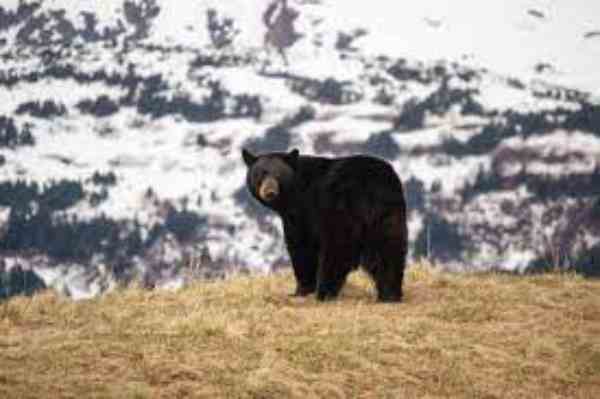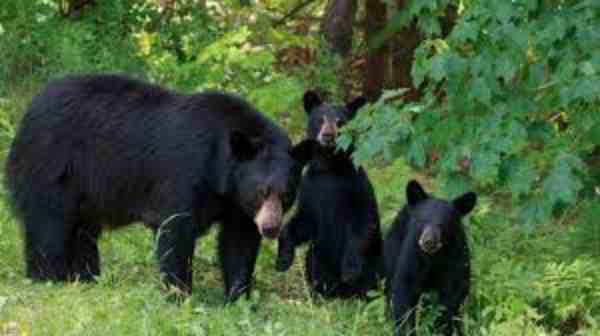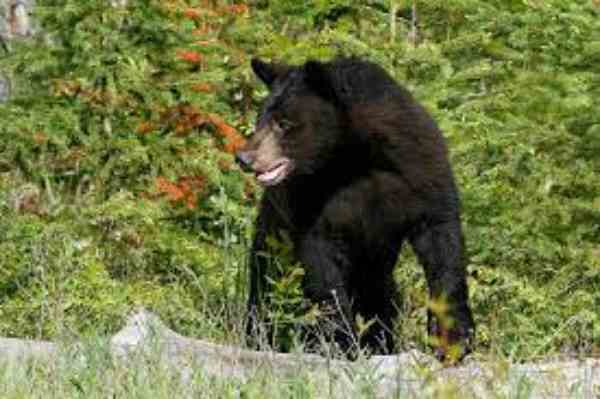Colorado is home to an iconic species, the black bear. Black bears were once abundant across North America, but due to human settlement and other environmental changes, their populations have decreased in many areas. Fortunately, within the state of Colorado, black bears thrive! Although humans often encounter these animals in rural and suburban areas, it’s worth noting that Colorado’s habitat for black bears ranges widely from the rugged foothills of the Rocky Mountains to high alpine habitats.

Table of Contents
Are there Black bears in Colorado?
Colorado is one of the states in the United States where it’s possible to find black bears! Although some areas have more of these beautiful creatures than others, with their population estimated at around 19,000-23,000 across the state. Primarily to be found in mountainous regions and wooded valleys, they tend to seek out elevations of 8000+ ft. Black bears can also be found in other areas like the southwest coastal region between Seattle and Vancouver that have had larger populations across the years.
Where are bears located in Colorado?
Black bears are the most populous, ranging throughout the state’s mountainous regions. Although Eastern Plains and Front Range areas host some black bear populations, Grizzlies were once found in diverse habitats across Colorado until the 1920s when it is believed they became extinct due to human-bear conflict and habitat destruction. Now, efforts are being made to reintroduce Grizzly Bears into North-Central Colorado and restore the population back to its former glory in a program that involves careful environmental monitoring from multiple agencies.
Habitat
Colorado provides black bears with a diverse selection of habitats, ranging from the depths of the forest to rolling grasslands. These animals are less picky in terms of location compared to other species, leading them to thrive in wooded areas such as shrublands and forest floors alike. More often than not, bears prefer elevations up to 11,000 feet, which leads many of these animals to venture into the rocky mountain range in Colorado.

Diet
Black Bears in Colorado are opportunistic feeders and eat fruits, nuts, insects, honey and anything else that will provide them with sustenance. In the summer months, they prefer to consume plant foods such as berries or other sweet material whilst, during the winter, they tend to dine on carrion and small prey such as rodents or deer.
Colour
Colorado’s black bears come in a variety of shades, ranging from deep brown to almost blonde in colour. It’s not uncommon to see these beautiful animals with coats that have shades or tones of blond and cinnamon mixed in with their solid black fur. What makes this so interesting is that these kinds of colour variations are unique to the Colorado area, making it a great spot for bear-watching. Studies show that the demographics of Colorado’s black bears change over time as habitats shift and the bears’ needs evolve, leading to an ever-changing population based on the availability of food, shelter and other natural necessities.
Size, Lifespan and Weight
The average black bear will weigh between 150 to 600 pounds, or even more in some cases. In terms of length, an adult black bear can have a total standing size of 3 to 7 feet. Furthermore, black bears are long-lived species with a lifespan of approximately 15 – 25 years when living in the wild, and up to 30 years when in captivity.

Predators
Bears in Colorado have the occasional run-in with some of their more vicious predators, such as coyotes, bobcats and mountain lions. Fortunately for the bears, they are generally much larger than their predators and can often repel the attack. Still, if the predator sees an opportunity like a bear cub being left alone for even just a few minutes it might rush in to feed or carry away the smaller animal. This is something all bear families should keep in mind when venturing into Colorado’s forests and mountain ranges; while they may never see any of these predators on their travels, they must still be aware that they could be nearby lurking in shadows or behind tall grasses.
Reproduction
Black bears are equipped with sophisticated reproductive strategies that have allowed the species to thrive, even in the face of intense competition for resources. Their mating period starts in mid-May, although different populations have slight variations in timing. During this time, female bears will mate with multiple males and store sperm from each mating until wintertime when she enters into a state of delayed implantation.
This means that although her body can hold onto multiple sets of sperm at once, it won’t begin the process of producing cubs until later on in the year. A few months after entering hibernation, she’ll give birth to litters averaging two cubs (though litters can range between one and four). The mother bear will raise these cubs on her own over the winter before they venture out on their own come springtime.

How many bears are in Colorado?
According to the Colorado Parks and Wildlife (CPW) department, approximately 18000-21000 black bears inhabit Colorado. This means that roughly 1 bear can be found for every 200 people in the state. In order to help protect this population of black bears, CPW implements various conservation methods such as closing berry fields to conserve vegetables and nuts for wildlife.
What elevation range are black bears found in Colorado?
Colorado is home to the largest population of black bears in the United States. These beautiful creatures can be found across the state, between elevations of 6,000 feet and 12,000 feet. Black bears live in forests and wooded areas with plenty of available food sources such as berries, fruits, nuts, and insects.
Reference:
https://www.fs.usda.gov/detail/npnht/learningcenter/nature-science/?cid=fseprd696195
https://westernwildlife.org/black-bear-ursus-americanus/biology-behavior-3/
https://coloradoencyclopedia.org/article/black-bear
A motivated philosophy graduate and student of wildlife conservation with a deep interest in human-wildlife relationships, including wildlife communication, environmental education, and conservation anthropology. Offers strong interpersonal, research, writing, and creativity skills.










